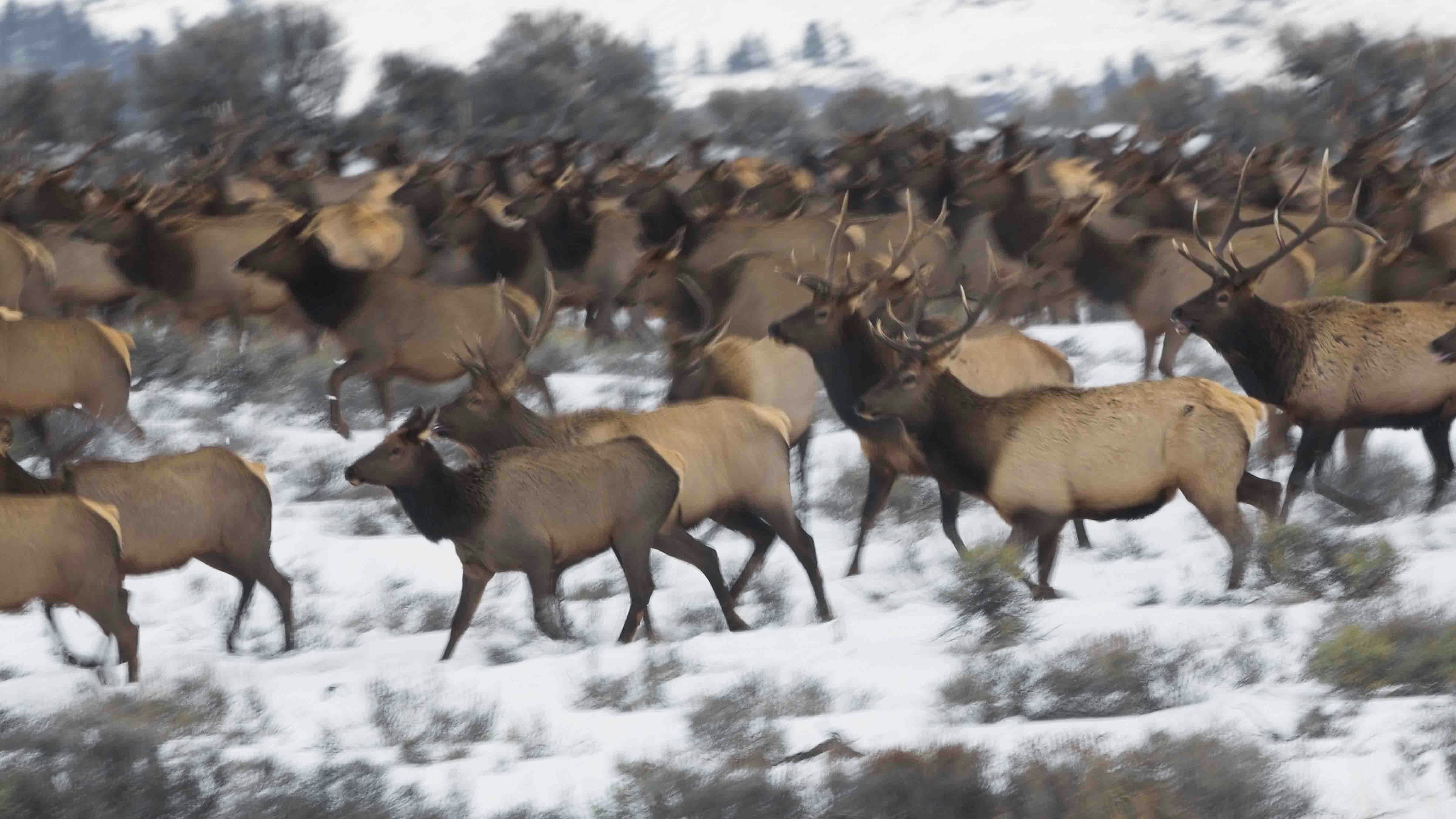Wyoming people have a long history of tackling tough problems by working together and finding solutions that can work for everyone involved. For decades landowners and the Wyoming Game and Fish Department have tackled tough wildlife and livestock management challenges by working together.
Conserving sage-grouse, building the Wyoming Plan for domestic and wild sheep management and addressing conflict between grizzly bears and livestock highlight a few examples where landowners, Game and Fish and the public have worked together productively. Our state’s private land elk management problems are no different and can only be addressed through the same collaborative approach.
Over the last two decades, elk populations have expanded in Wyoming. Department wildlife managers estimate the population of elk in the Cowboy State to be 109,000 and much of the expansion has occurred on private lands.
Wyoming landowners have always willingly provided habitat for elk and other wildlife. It is important to note that roughly fifty percent of our state is privately owned and we would not enjoy the abundance or diversity of wildlife we have without private landowners providing quality habitat.
There is no denying that some elk herds exceed established management objectives and have negative impacts on private landowners. Over the last five years, elk damage claims have increased by 42 percent.
Clearly, excessive populations are having a negative impact on the financial interests of Wyoming producers. Their livestock are actively competing for forage with elk. Additionally, many are concerned that elk compete with other species like mule deer in areas where elk exceed management objectives.
Game and Fish wildlife managers have relied on hunter harvest as their primary tool to manage populations. The Department has traditionally used hunting season adjustments and access agreements to reduce populations.
Game and Fish has also relied on its game damage program to compensate landowners for losses they suffer when wildlife causes damage to growing crops, stored crops or rangelands. For various reasons, these tools are insufficient to address some of our current challenges.
Wildlife managers and ranchers have been working together to find innovative ways to address these problems. Landowners have worked with the Department to increase hunter access under various ranch-specific models.
The Game and Fish Commission has changed its rules to allow the Department more flexibility to address chronic damage problems and over-objective elk populations. This additional flexibility is proving effective in helping resolve issues on private lands.
At the same time, ranchers have changed their management practices to influence elk distribution. Game and Fish has implemented management actions to harvest antlerless elk in a targeted and herd-specific manner.
The Commission is currently evaluating its damage compensation program to find new ways to deal with elk utilization in areas where herds have grown to a level where they are creating hardships for livestock producers.
Suffice it to say that the problems created by over-objective elk populations have yet to be solved, but those who care about finding a solution have been working hard to get there. There is no overnight, one-year solution and patience will be important.
No good will come from creating division between ranchers, the Department and hunters. Advocating for extreme ideas that are unacceptable to Wyoming’s citizens and most ranchers will not get us to where we need to be.
We feel strongly that spending time and energy assigning blame is not productive and our best chance to find a successful resolution is through hard work and strong partnerships.
Juan Reyes is a landowner and rancher in southeast Wyoming
Brian Nesvik is the Director of the Wyoming Game and Fish Department





